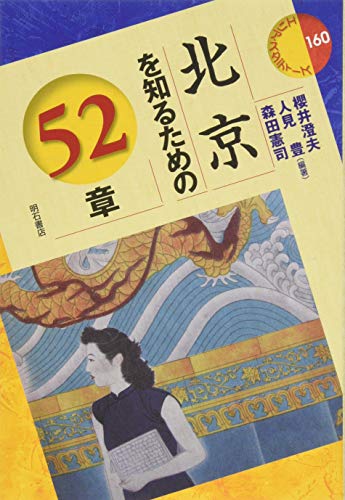- 著者
- 長谷川 俊介 森山 りや子
- 出版者
- 一般社団法人 情報科学技術協会
- 雑誌
- 情報の科学と技術 (ISSN:09133801)
- 巻号頁・発行日
- vol.41, no.12, pp.943-950, 1991
1 0 0 0 OA バスマップの見直しによるコミュニティバス利用意図の向上可能性に関する研究
- 著者
- 杉浦 栄紀 三輪 富生 森川 高行 山本 俊行 加藤 博和
- 出版者
- Japan Society of Civil Engineers
- 雑誌
- 土木計画学研究・論文集 (ISSN:09134034)
- 巻号頁・発行日
- vol.26, pp.715-723, 2009 (Released:2017-11-29)
- 参考文献数
- 12
- 被引用文献数
- 1 1
相次ぐ路線バスの縮小・撤退を背景に,自治体が主体となって運営するコミュニティバスを導入する事例が増加している.しかし,利用者が少ないコミュニティバスの運営は自治体にとって大きな負担となっており,交通不便地域における市民の足を維持することが困難となっている.本研究はより少ない費用で実施可能な利用促進策としてバスマップに注目し,既存のバスマップの問題点を整理した上で,新しいバスマップの作成を試みた.新しいバスマップの効果をグループインタビュー調査およびアンケート調査を通じて検証した結果,内容を吟味したバスマップは,グループインタビューにおける議論の活性化に影響を与える可能性を示した.
1 0 0 0 拡張型心筋症に腹部大動脈血栓塞栓症を併発したボルゾイ犬の外科症例
- 著者
- 福森 隆寛 吉元 直輝 中野 皓太 中山 雅人 西浦 敬信 山下 洋一
- 出版者
- 一般社団法人 日本音響学会
- 雑誌
- 日本音響学会誌 (ISSN:03694232)
- 巻号頁・発行日
- vol.71, no.11, pp.590-598, 2015
近年急速に発展するディジタル技術を用いて日本の文化資源を保存・再現するディジタルアーカイブが注目視されており,これまでに有形文化財に対するディジタルアーカイブの研究が精力的に進められてきた。一方,無形文化財(特に歴史的文化財の音空間)のディジタルアーカイブの研究は,まだ創世期の段階で手がつけられておらず,日本の歴史的文化財の保存・伝承という観点から無形文化財のディジタルアーカイブは急務である。そこで本研究では日本無形文化財の一つである京都祇園祭に着目し,ActionScriptを用いて日本無形文化財の音場体験システムを開発した。はじめに日本無形文化財の京都祇園祭のディジタルアーカイブを目指して,京都祇園祭の山鉾巡行(約4kmにも及ぶ経路を山鉾が4〜5時間かけて巡行)の音響素片を収集した。そして,祇園祭の巡行経路を体験者が指定することで,その経路上のお囃子が体験できるインタラクティブWebシステムを開発した。
1 0 0 0 痛みの測定システムーその開発と実用化ー
本システムの実用化に向けて、皮膚温センサとして採用した皿型センサの安定性評価というハ-ド的な検討を行うとともに、時間法による痛覚閾値測定法および反復輻射熱刺激法の評価というソフト的な検討を行った。さらに、実際に健常者に対する痛覚閾値の基礎デ-タ収集、各種疼痛患者に対する測定をはじめとする各種応用の検討がなされた。以下に、主な研究成果を示す。(1)本システムを用いた輻射熱刺激では被刺激部位の皮膚表面温度分布は釣り鐘型であるが、採用した2mmφの皿型センサ-では0.5mmの設定立置ずれに対しても最大0.3℃程度の測定誤差であることが示された。(2)心療内科領域における各種疼痛患者、痛みの無い心因性疾患者などにおける測定から、背景病態心理別に異なった痛反応時間パタ-ンを有することが示され、器質性の痛みと心因性の痛みの差異が示唆された。(3)異なる刺激強度で時間法による痛覚閾値測定を行った結果、最高到達温度に対する感覚および情動的ビジュアルアナログ得点にベキ関数が適合することが示唆された。(4)身体各部で痛覚閾値を測定し、部位差の影響を調べた結果、測定部位の反膚温度が閾値パラメ-タに影響を与える場合があることが示された。従って、測定結果の評価には測定部位の温度を考慮する必要がある。(5)各種血管拡張薬の末梢への投与による痛覚閾値の変化が測定された。(6)反復輻射熱刺激法による二次痛の測定の可能性が示された。(7)SMON患者において熱痛覚閾値の測定を行った結果、健常者に比較し痛覚閾値が有意に高い部位があることが認められた。また脊髄髄節域でみた場合、遠位部での閾値の上昇が顕著である例が示された。(8)全身麻酔下での痛覚閾値測定の応用が検討された。
1 0 0 0 OA ポルフィリンの化学
- 著者
- 森 重樹
- 出版者
- 公益社団法人 日本化学会
- 雑誌
- 化学と教育 (ISSN:03862151)
- 巻号頁・発行日
- vol.63, no.12, pp.600-601, 2015-12-20 (Released:2017-06-16)
- 参考文献数
- 2
- 著者
- 森田学 高木唯夫[著]
- 出版者
- 愛媛大学農学部林政学研究室
- 巻号頁・発行日
- 1958
1 0 0 0 OA Panadura 論争について
- 著者
- 森 祖道
- 出版者
- Japanese Association of Indian and Buddhist Studies
- 雑誌
- 印度學佛教學研究 (ISSN:00194344)
- 巻号頁・発行日
- vol.18, no.1, pp.361-366, 1969-12-25 (Released:2010-03-09)
1 0 0 0 ICTによる観光資源開発支援:心理学的効果を応用した期待感向上
1 0 0 0 OA チャハルのブルニ親王の乱をめぐって
- 著者
- 森川 哲雄
- 出版者
- 東洋文庫
- 雑誌
- 東洋学報 = The Toyo Gakuho (ISSN:03869067)
- 巻号頁・発行日
- vol.64, no.1・2, pp.99-129, 1983-01
In the spring of 1675, Prince Burni, head of the Inner Mongolian Chakhar tribe, rose in arms against the Manchu Ch’ing Dynasty of China, which was then afflicted by a large-scale rebellion in the south started by the so-called Three Feudatories. Taking advantage of this situation, the prince, along with some other Inner Mongolian chiefs who cooperated with him, aimed at liberating his people from the Manchu yoke and bringing back the old glory of the Chakhar Khanate. Not surprisingly, official Ch’ing sources supply only scant information as to what caused this rebellion and how it developed. At that time, the Koreans of the Yi Dynasty Joseon Kingdom, with their barely-concealed anti-Manchu feelings, were keenly interested in the behavior of Burni and his father, Abunai, and information they gathered on the two princes was included in the Veritable Records of that dynasty, Yinjo Sillog. As the Korean source tells us, the Manchu-Chakhar discord originated in the days of Prince Abunai, who had fallen out with Shun-Chih and would not visit Peking even when the emperor died. After the death of Princess Makata, his first wife, Abunai married another woman without asking for permission from the Ch’ing court and ceased to attend the New Year’s celebrations in Peking after 1663 altogether. In 1669 Emperor K’ang-hsi had him arrested and detained at Shenyang, and granted the Chakhar Principality to his son Burni. Deeply offended by the treatment of his father, the young prince prepared for a rebellion while pretending to be loyal to the Ch’ing. Although it was easily suppressed in a short time, the rebellion of Burnj was one of the most politically significant incidents in seventeenth-century Inner Mongolia
1 0 0 0 日本語表現文型 : 用例中心・複合辞の意味と用法
- 著者
- 森田良行 松木正恵著
- 出版者
- アルク
- 巻号頁・発行日
- 1989
1 0 0 0 OA 歌唱特徴付与システム「ロックボーカルレゾネータ」
- 著者
- 辰巳 直也 森勢 将雅 片寄 晴弘
- 雑誌
- 研究報告音楽情報科学(MUS)
- 巻号頁・発行日
- vol.2010-MUS-87, no.7, pp.1-6, 2010-10-07
Vocaloid 「初音ミク」 の発売以来,歌唱合成に対する注目が高まりつつある.Vocaloid では,メロディと歌詞を入力することにより,サンプリングされた人の声を元にした歌声を合成することができる.また,表情パラメタを調整することにより,様々な表情を付与することができる.しかし,より人間らしい表情豊かな歌声にするには,表情パラメタの調整を細かく設定することが必要なため,非常に煩雑で時間がかかる.本研究では,ロック歌手の一人 「GACKT」 の歌い方に見られるビブラートやポルタメントといった音高・(音量) 等の歌唱技法を低次のモデルパラメタで近似し,混合ガウス分布を用いた手法でモデルパラメタを決定する.それらの値を Vocaloid の出力に付加することで,ロック歌手らしい歌い方を実現する 「ロックボーカルレゾネータ」 を提案する.
1 0 0 0 OA トライにおける逆方向遷移可能かつコンパクトな配列構造
- 著者
- 神田 峻介 泓田 正雄 森田 和宏 青江 順一
- 雑誌
- 研究報告情報基礎とアクセス技術(IFAT) (ISSN:21888884)
- 巻号頁・発行日
- vol.2015-IFAT-119, no.10, pp.1-6, 2015-07-29
トライと呼ばれる順序木を効率的に表現するデータ構造として,高速な検索を提供するダブル配列がある.また,データの大規模化に伴いコンパクト性が重視される背景に応じて,様々なダブル配列の圧縮表現が提案されてきた.しかし,これらの圧縮表現は,トライにおける順方向の遷移 (親から子) のみを提供し,逆方向の遷移 (子から親) を提供していないため,結果としてダブル配列における逆引きや動的更新を犠牲にしている.本論文では,逆方向遷移を可能としたコンパクトな配列構造を提案する.記憶量について,ダブル配列の約 36%でトライを表現可能なことが実験により確認されている.
1 0 0 0 IR ソーシャルメディアによる感情共有と創造的思考の関係
- 著者
- 森沢 幸博
- 出版者
- 埼玉女子短期大学
- 雑誌
- 埼玉女子短期大学研究紀要 = Bulletin of Saitama Women's Junior College (ISSN:09157484)
- 巻号頁・発行日
- no.29, pp.45-61, 2014-03
1 0 0 0 OA デフレ下の賃金水準引上げ政策と「標準/最低生計費」の算定
- 著者
- 森 ます美 Masumi Mori
- 雑誌
- 昭和女子大学女性文化研究所紀要 = Bulletin of the Institute of Women's Culture, Showa Women's University (ISSN:09160957)
- 巻号頁・発行日
- vol.41, pp.12-29, 2014-03-31
The wage increase is the inevitable issues to expanding domestic demand for Japan which is faced with the challenge of overcoming deflation. In this situation, since the 2000s, the measuring standard/minimum cost of living has attracted attention for wage increase policy. National trade union centers and researchers measured them. This paper compares four standard/minimum cost of living. Our findings are as follows. The difference in level is large to say the standard/minimum cost of living. Then, to enhance the effectiveness of measuring standard/minimum cost of living for the wage increase policy, the more research on the standard of living and wages being guaranteed to the workers is required.
1 0 0 0 北京を知るための52章
- 著者
- 櫻井澄夫 人見豊 森田憲司編著
- 出版者
- 明石書店
- 巻号頁・発行日
- 2017
1 0 0 0 IR 近世中期における仮養子制度 : 肥後人吉藩相良家の場合
- 著者
- 大森 映子
- 雑誌
- 湘南国際女子短期大学紀要
- 巻号頁・発行日
- vol.15, pp.240-222, 2008-03-31



